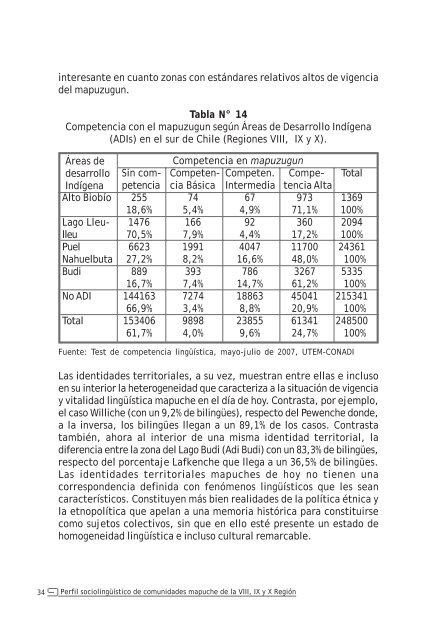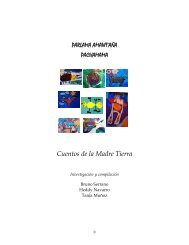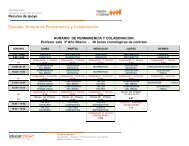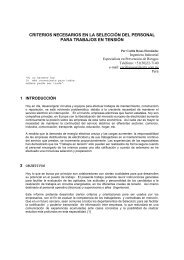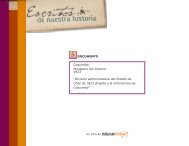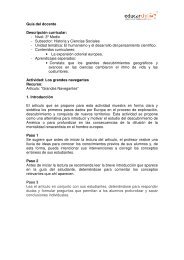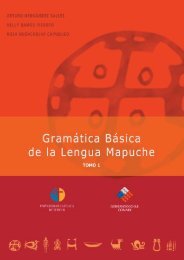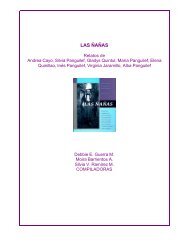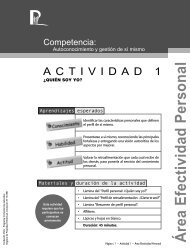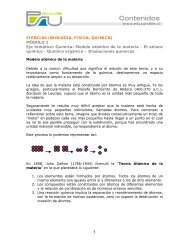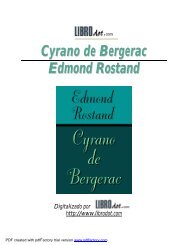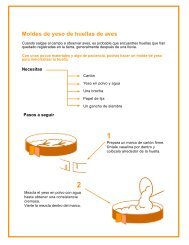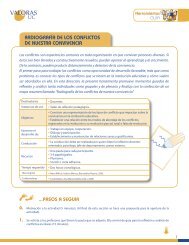Perfil sociolingüístico de comunidades mapuche de la ... - Educarchile
Perfil sociolingüístico de comunidades mapuche de la ... - Educarchile
Perfil sociolingüístico de comunidades mapuche de la ... - Educarchile
You also want an ePaper? Increase the reach of your titles
YUMPU automatically turns print PDFs into web optimized ePapers that Google loves.
34<br />
interesante en cuanto zonas con estándares re<strong>la</strong>tivos altos <strong>de</strong> vigencia<br />
<strong>de</strong>l mapuzugun.<br />
Tab<strong>la</strong> N° 14<br />
Competencia con el mapuzugun según Áreas <strong>de</strong> Desarrollo Indígena<br />
(ADIs) en el sur <strong>de</strong> Chile (Regiones VIII, IX y X).<br />
Áreas <strong>de</strong><br />
<strong>de</strong>sarrollo<br />
Indígena<br />
Competencia en mapuzugun<br />
Sin com- Competen- Competen. Compe- Total<br />
petencia cia Básica Intermedia tencia Alta<br />
Alto Biobío 255 74 67 973 1369<br />
18,6% 5,4% 4,9% 71,1% 100%<br />
Lago Lleu- 1476 166 92 360 2094<br />
lleu 70,5% 7,9% 4,4% 17,2% 100%<br />
Puel 6623 1991 4047 11700 24361<br />
Nahuelbuta 27,2% 8,2% 16,6% 48,0% 100%<br />
Budi 889 393 786 3267 5335<br />
16,7% 7,4% 14,7% 61,2% 100%<br />
No ADI 144163 7274 18863 45041 215341<br />
66,9% 3,4% 8,8% 20,9% 100%<br />
Total 153406 9898 23855 61341 248500<br />
61,7% 4,0% 9,6% 24,7% 100%<br />
Fuente: Test <strong>de</strong> competencia lingüística, mayo-julio <strong>de</strong> 2007, UTEM-CONADI<br />
Las i<strong>de</strong>ntida<strong>de</strong>s territoriales, a su vez, muestran entre el<strong>la</strong>s e incluso<br />
en su interior <strong>la</strong> heterogeneidad que caracteriza a <strong>la</strong> situación <strong>de</strong> vigencia<br />
y vitalidad lingüística <strong>mapuche</strong> en el día <strong>de</strong> hoy. Contrasta, por ejemplo,<br />
el caso Williche (con un 9,2% <strong>de</strong> bilingües), respecto <strong>de</strong>l Pewenche don<strong>de</strong>,<br />
a <strong>la</strong> inversa, los bilingües llegan a un 89,1% <strong>de</strong> los casos. Contrasta<br />
también, ahora al interior <strong>de</strong> una misma i<strong>de</strong>ntidad territorial, <strong>la</strong><br />
diferencia entre <strong>la</strong> zona <strong>de</strong>l Lago Budi (Adi Budi) con un 83,3% <strong>de</strong> bilingües,<br />
respecto <strong>de</strong>l porcentaje Lafkenche que llega a un 36,5% <strong>de</strong> bilingües.<br />
Las i<strong>de</strong>ntida<strong>de</strong>s territoriales <strong>mapuche</strong>s <strong>de</strong> hoy no tienen una<br />
correspon<strong>de</strong>ncia <strong>de</strong>finida con fenómenos lingüísticos que les sean<br />
característicos. Constituyen más bien realida<strong>de</strong>s <strong>de</strong> <strong>la</strong> política étnica y<br />
<strong>la</strong> etnopolítica que ape<strong>la</strong>n a una memoria histórica para constituirse<br />
como sujetos colectivos, sin que en ello esté presente un estado <strong>de</strong><br />
homogeneidad lingüística e incluso cultural remarcable.<br />
<strong>Perfil</strong> <strong>sociolingüístico</strong> <strong>de</strong> comunida<strong>de</strong>s <strong>mapuche</strong> <strong>de</strong> <strong>la</strong> VIII, IX y X Región


